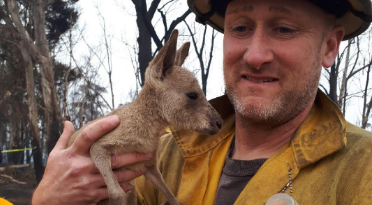UN Fails to Reduce Disaster Risk
By John Carey
Staff Writer
Ten years ago, the United Nations held its second conference on disaster risk reduction and created the Hyogo Framework for Action. In the time this has been in place, more than 800,000 people have died, $1.4 trillion in economic damage has occurred, and more than 24 million people have been left homeless by disasters, according to the Centre for Research on the Epidemiology of Disasters (CRED). These numbers indicate that disasters are still a problem for much of the world and there must be a more comprehensive plan to address them.
The Hyogo agreement’s goal for the substantial reduction in losses caused by disasters has clearly failed. As shown in the International Disaster Database of the CRED, many of these numbers have either decreased slightly or increased when compared to a decade before when the agreement was signed.
In the city of Sendai, only a few miles from where a tsunami hit Japan in 2011, the U.N. recently held another conference to renew and update their disaster risk reduction framework. The meetings were held from March 14 to the 18 where delegates from the U.N., countries around the world, and various NGO’s gathered to figure out what worked and what did not from the previous Hyogo agreement. In the end, the new agreement hammered out new goals between now and 2030. However, the language remains far too vague. While the agreement calls for a “substantial” reduction in deaths and economic losses, there is no concrete number that states must aspire to achieve, predicating that this agreement will be just as ineffective as the last.
Cyclone Pam helped to highlight the importance of creating an effective deal. This severe tropical cyclone struck the island nation of Vanuatu on March 13 around the time of the Sendai talks, causing widespread destruction. According to the BBC, aid workers report that more than
80% of the homes and buildings on the island of Tanna have been either partially or completely destroyed. The U.N. estimates 17 people dead. It also reports that although aid has reached all 22 islands, it is stretched thin; drinking water has run out across much of the country and many crops have been destroyed. Any development that the small island nation has made in this century has been wiped out. Cyclone Pam showed just how vulnerable some states remain during disasters.
Disaster risk reduction has generally called for legislative action on the part of countries and an increase in connectivity between countries to allow for aid and information sharing. The Hyogo agreement contained numerous ideas for programs that governments could enact to help them prepare for disasters, such as education programs and resource mobilization. Improved early warning systems have also allowed countries to have more time for evacuation. However, most of the programs these agreements put forth are very reactive to the disaster. They respond to the disaster only after it has appeared or done damage. A better approach to disaster risk reduction would include proactive measures that take climate change into greater account.
Later this year, diplomats will meet in Paris in an attempt to reach a new legally binding climate agreement to surpass the previous Kyoto Protocol. The original plan was to have countries submit Intended Nationally Determined Contributions (INDCs) that would outline each country’s plan to tackle greenhouse gases. These INDCs were due at the end of March, but at that time only 33 countries submitted a plan, according to the International Institute for Sustainable Development.
The vague language in the Sendai Agreement and the tardiness on submitting INDCs shows that countries are not taking disaster reduction and climate change issues seriously. In a broader context, these stumbles could foreshadow a failure in the U.N. Post-2015 Development Agenda. The only way to truly decrease the risk that disaster poses to populaces is to address the issue of climate change now.


